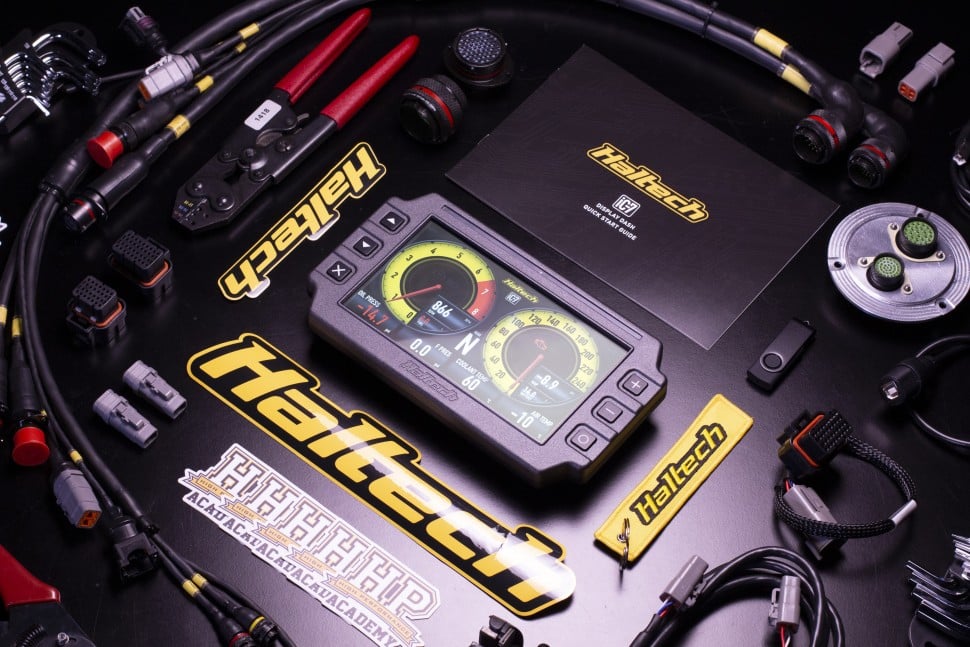| 00:04 |
-00:00:00,300 --> 00:00:04,659 A key factor in touring cars going much faster over the last 20 or so years has been the proliferation of higher level aerodynamic devices filtering their way all the way down to the club level.
|
| 00:11 |
These advancements have made significantly more performance possible by giving touring cars much more grip and traction.
|
| 00:18 |
In this section of the course we're going to dive into aero development at the club level starting with a quick look at how some of these devices have evolved over the years in order to understand the direction aero is taken.
|
| 00:30 |
If we look back to the 90s touring cars in professional series didn't have great aerodynamics.
|
| 00:35 |
They typically had small basic rear wings mounted low down and more or less factory bodywork.
|
| 00:42 |
A common geometry that was run on the front bumper was what was known as an air dam, a vertical panel that went down lower than the factory front bumper.
|
| 00:50 |
These devices were very popular for quite some time as a means of creating front downforce, but the reality is that they were not as popular as they used to be.
|
| 00:56 |
An air dam essentially restricts the airflow coming underneath the floor.
|
| 01:03 |
The vertical section closes the gap to the ground more and generates a big separated region off the rear of the panel.
|
| 01:10 |
This also reduces any air that might spill up into the engine bay from under the front bumper.
|
| 01:16 |
This drops the pressures under the engine bay and under the hood, so we end up with more front downforce.
|
| 01:22 |
However, this design is really limited in the amount of downforce it can produce.
|
| 01:27 |
So in order to increase the downforce further we'd often see small horizontal extensions forward at the bottom of the air dam.
|
| 01:34 |
Those were the first forms of splitters.
|
| 01:37 |
These extensions could capture the high pressure in front of the car at the top with the lower pressure underneath and this would apply a downwards force to the splitter.
|
| 01:46 |
In the 2000s the development of the splitter became much more important and cars started to get larger and more developed splitters.
|
| 01:53 |
Extending rearwards under the bumper and engine bay, you could see the car creating more downforce more efficiently.
|
| 01:58 |
We also saw the addition of front diffusers, which made the splitters function much better which we'll discuss more in detail on the next module.
|
| 02:08 |
Wings started to grow and get more optimized profiles increasing the downforce of the rear to balance the front improvements.
|
| 02:15 |
As we got into the mid 2010s we saw the advent of big aero in club racing.
|
| 02:21 |
Horsepower levels from engines were starting to get very high, so drag was not much of an issue but the traction and cornering grip were becoming a major problem.
|
| 02:30 |
The best competition to track aero's evolution is the world time attack challenge, which to me is the pinnacle of club level aerodynamics.
|
| 02:39 |
Looking back to 2010 the Cyber Evo was the winning car in pro class.
|
| 02:44 |
This car had a fairly standard splitter with basic front diffusers, rear wing and Can-Art package.
|
| 02:50 |
Move forward to 2012 and we had cars like Nemo and the Hammerhead appearing, which had huge splitters.
|
| 02:56 |
Big Can-Art packages, large rear wings and diffusers.
|
| 03:00 |
Computational fluid dynamics, or CFD for short, development had started to become more accessible at this point so the bodywork on these cars could be far better optimized.
|
| 03:11 |
2014 to 2015 saw teams start to chase much larger diffuser tunnels to power up the car's floors and RP968 came in with a full front wing setup to maximize the front downforce.
|
| 03:24 |
All these cars started to see significant drops in lap time as they paired higher downforce levels with increased power to overcome the drag and for single lap performance this is typically the fastest way to go for a touring car.
|
| 03:37 |
The key trend that can be observed amongst all these cars is that moving to more sophisticated and generally speaking more aggressive and larger aero package has seen a reduction in lap time.
|
| 03:48 |
Moving beyond the limitations of stock bodywork has enabled these cars to significantly improve their performance on track.
|
| 03:56 |
Let's summarize what we've covered in this module before moving on.
|
| 03:59 |
Touring cars have become much faster in recent decades due to the trickle down of advanced aerodynamic devices, significantly improving grip and traction.
|
| 04:08 |
In the 90s cars had basic aerodynamics with small wings and air dams but by the 2000s splitters, front diffusers and optimized rear wings greatly enhanced downforce.
|
| 04:19 |
By the mid-2010s club level racing saw the introduction of large aero packages powered by CFD which led to notable drops in lap time and significant performance gains.
|





